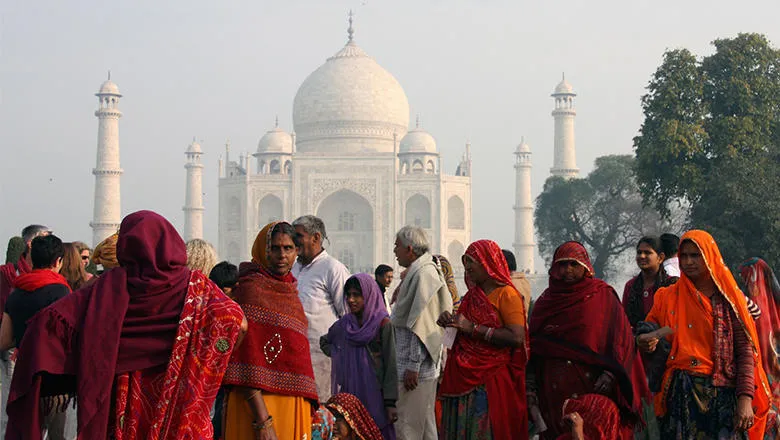01 November 2018
Missed opportunities: time is running out for the Indian government to pass legislative gender quotas bill
Dr Carole Spary, Assistant Professor at the School of Politics and International Relations, University of Nottingham
Progress on the country gaining more women MPs has stalled

India’s next national election is due in summer 2019, when more than 800 million voters will again exercise their power to decide who their parliamentary representatives will be. But with draft legislation on gender quotas unlikely to be passed and implemented before then, and the reluctance of major parties to give women candidates greater opportunities, India’s lower house, the Lok Sabha, is not likely to see a substantial increase in women MPs beyond the current 12%.
India has made uneven progress on gender and political representation. Since the 1990s, gender quotas in local government, in the form of reserved seats for women, have proved very successful, enabling the election of women representatives to at least a third of local council seats in most states. Several of India’s political parties are, or have been, led by women, and India has had two consecutive women Speakers of the lower house. The longest serving Rajya Sabha (upper house) member was a woman MP, and a long serving presiding officer of that house (Deputy Chairperson).
Yet successive Indian general elections have never returned more than 12% women MPs to the Lok Sabha. The scenario is even more depressing in the subnational state legislatures. In the Gujarat election of December 2017, women legislators’ presence actually went down from 8.7% to 7.1%.
The problem is not voter discrimination; women candidates overall have higher success rates than men, but they are given far fewer opportunities by political parties; men have always comprised more than 90% of Lok Sabha candidates. In the ten general elections since 1980, the two major rival national parties, the Congress Party and the BJP, have never exceeded 13% women among their parties’ candidates in national elections. For women’s presence in parliament to increase, they need to be given more chances by major political parties. The reluctance of parties to field women has led to greater support for reserved seats for women.
Women’s movement organisations in India have campaigned persistently for gender quotas, only to be disappointed by inconsequential political party rhetoric. The Women’s Reservation Bill came close in 2010 when it was passed in the upper house of the national parliament, amid controversial scenes. Having learnt from previous attempts, the same bill’s introduction in 2008 in the upper house was a strategic move to ensure the bill did not lapse at the end of the parliamentary term. India’s smaller upper house does not formally dissolve. However, once passed, the Congress-led coalition government did not then manage to introduce and pass the bill in the lower house before the end of its term in 2014.
The current ruling party, the BJP, is approaching the end of its parliamentary term. It faces difficult questions on the non-passage of the Women’s Reservation Bill. The BJP supported the bill while in opposition in 2010, criticising the Congress-led government’s reluctance to pass it. The Congress party, then, was steering a fragile coalition government, and a key coalition partner strongly opposed the bill. The BJP has no such excuse – it won a slim majority on its own in 2014 – but has made seemingly little attempt to pass the bill, despite appeals from various parties and extra-parliamentary groups, for example, during the chamber on International Women’s Day this year and the Monsoon session in July-August 2018. Assuming the government does not call elections early, it has only two remaining sessions to pass the bill, before parliament is dissolved.
The Women’s Reservation Bill often dominates discussions of women’s political representation in India, justifiably to some extent – it is a clear manifestation of patriarchal resistance, the reluctance of party-political elites to cede some space and power to women. If passed, it would make a substantial difference to women’s parliamentary presence.
But this is not the only story to tell – as Professor Shirin Rai and I demonstrate in our new book, Performing Representation: Women Members in the Indian Parliament. The opportunities and challenges faced by women MPs and MLAs as a minority presence in legislatures prompt other questions on gender and political representation. Formal and informal institutional norms in parliament affect how women MPs experience parliament and perform representation: their access to legislative debates; nomination to, and work in, parliamentary committees; their response to expectations about ‘representativeness’ as women MPs, including intersectional considerations; their negotiation of competing party, electoral constituency, and other constituency commitments; public pressures to demonstrate their representative performances through various media; prospects for re-nomination and re-election at the end of their term; and the longer term sustainability of their political careers in a male-dominated environment.
These important themes are discussed in our book. The forthcoming national election will influence the proportion and political persuasion of women MPs elected to the Lok Sabha in 2019, and their experiences of campaigning, but the story of how women MPs navigate parliament and how it shapes the gendered opportunities and challenges they face in exercising political leadership as parliamentarians will begin (or continue) after the election.
Dr Carole Spary is Assistant Professor at the School of Politics and International Relations, and Deputy Director, Asia Research Institute, at the University of Nottingham, UK. She is the author (with Professor Shirin Rai) of Performing Representation: Women Members in the Indian Parliament (OUP, in India, 2018, RoW 2019).
